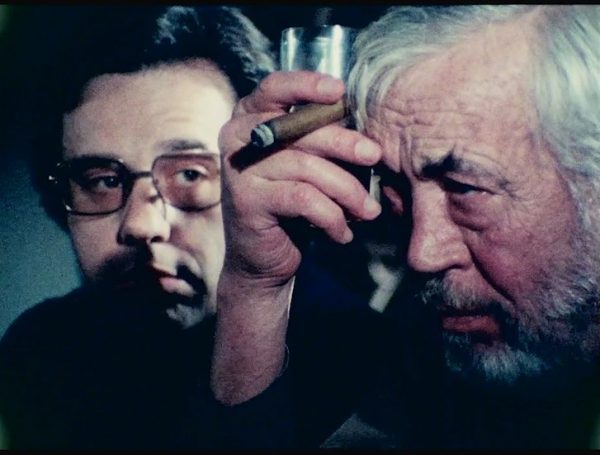I have been waiting to see the Orson Welles’ film The Other Side of the Wind for more than 20 years. When I was 15, I actually wrote an article for my local paper about the strange and convoluted history of the film, which was then unfinished and in legal limbo. I never thought it would be released, and instead would remain as one of the great what-ifs, like Kubrick’s Napoleon or the Coen Brothers’ To The White Sea. Miraculously, The Other Side of the Wind was not only completed , but done so in a twisty, meta way that is so perfect it seems almost planned.
Production on the film originally began in 1970, as a comeback project for Orson Welles. Welles, once the brightest comet in the movie industry, by then found himself in exile. He had over the years become enormously fat and drunk, and he hadn’t directed a successful film in decades. Although his later work in the 1950s and ’60s (Mr. Arkadin, Touch of Evil, The Trial, Chimes at Midnight, F is For Fake) is actually uniformly excellent, it was not well received at the time.
Welles, in his comeback-kid bid, concocted a kaleidoscopic autobiographical confession. The story of a faded film legend trying to make a modern avant-garde Zabriskie Point-style film while his budget is unraveling, The Other Side of the Wind’s plot became real, as the funding (partially from the Shah of Iran’s brother-in-law) dried up, and the film fell into legal turmoil and was largely unfinished, though with dozens of hours of footage shot by Welles. Welles died at age 70 in 1985, and for decades it seemed as if The Other Side of the Wind would remain a symbol of the sad failings of the last third of his life.
In a fun-house denouement Welles would have relished, the movie director Peter Bogdanovich — Welles’ friend and protégé who plays the Welles figure’s protégé in The Other Side of the Wind — eventually stepped in and finished the film. (Note: Welles’ character is played by great director John Huston.) Thus, the film itself and its history fuse together in a sort of double-helix ouroboros, looping back on themselves.
The fact that we can even watch The Other Side of the Wind is a kind of small miracle. The fact that it is a brilliant, beautiful, and exhilarating cinematic experience is almost a celestial blessing. Welles, and by extension Bogdanovich, whose own life eerily mirrored Welles’ with youthful success followed by decades of professional disappointment and personal tragedy, would likely find no conflict between the movie’s house-of-mirrors playfulness and a deeply melancholic sense of failure, loss, and guilt. The film is dazzlingly shot — a kind of drunken, careening verité — and wryly roasts some of the indulgences of auteur directors of the time. But at its core it’s about failure, the guilt of complicity in the wreckage of one’s life, and the toxic vampiric masculinity intrinsic in the camera’s eye.
As Huston says at the end of the film in a haunting voiceover: “Sometimes you can look at something too hard, ’til it dies. All those pretty boys and pretty girls, shoot ’em, shoot ’em dead.” The Other Side of the Wind ultimately presents a highly inspiring message for all artists of any stripe. The failures of one’s life, the failures of unfinished projects, are never truly finished, and may one day be burnished and lacquered like obsidian in the wreckage of a blaze.
‘The Other Side of the Wind’ is available to stream on Netflix.




1 comment
Nice piece! I’m really looking forward to digging into the film this weekend.